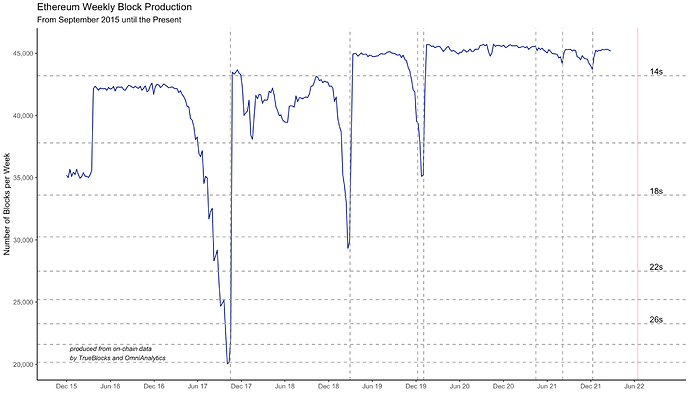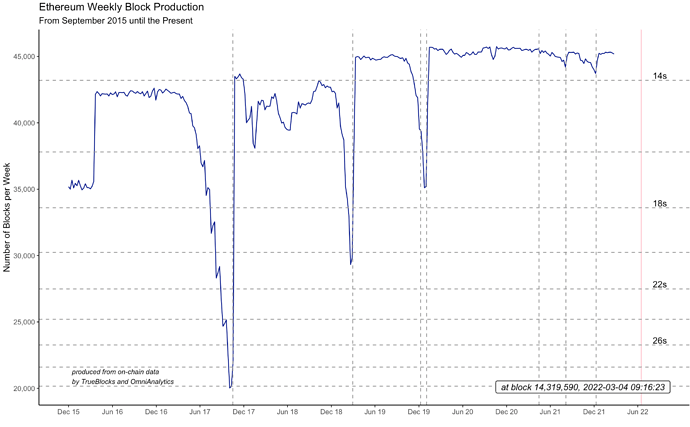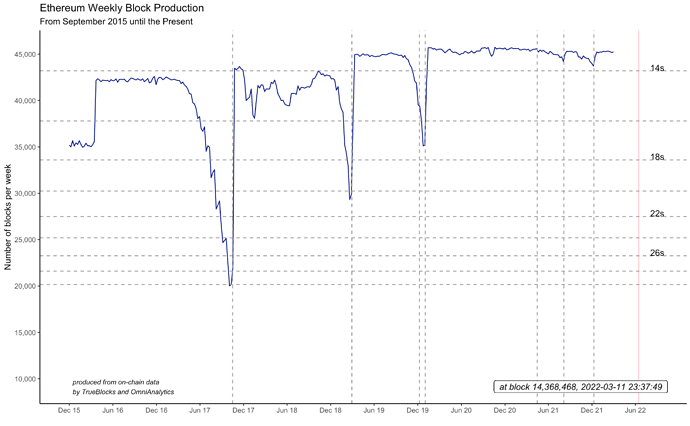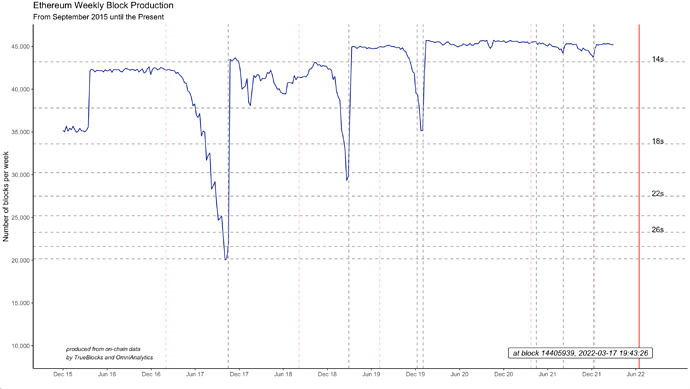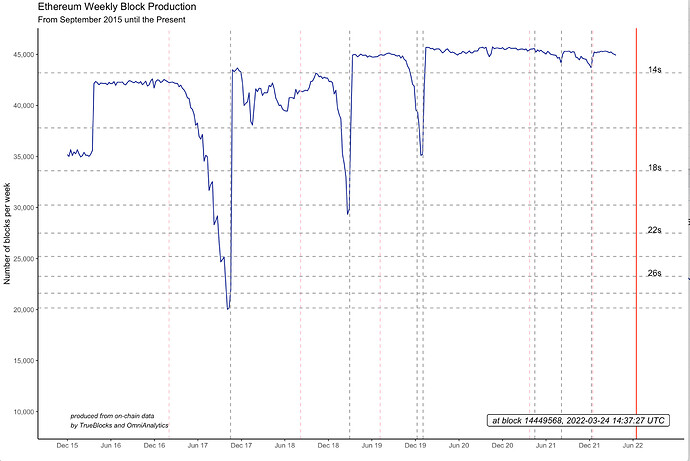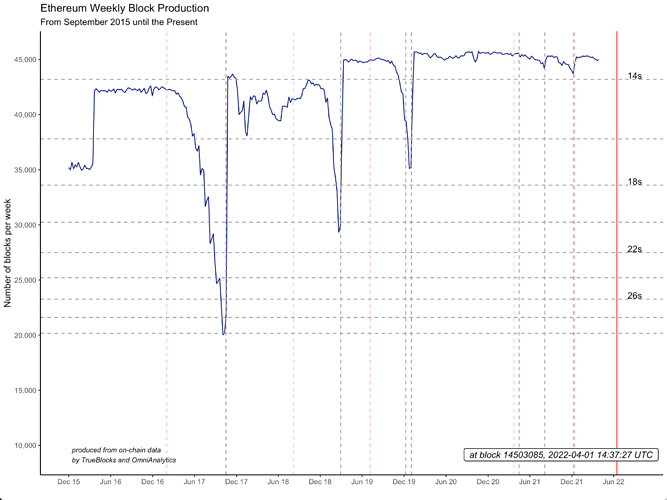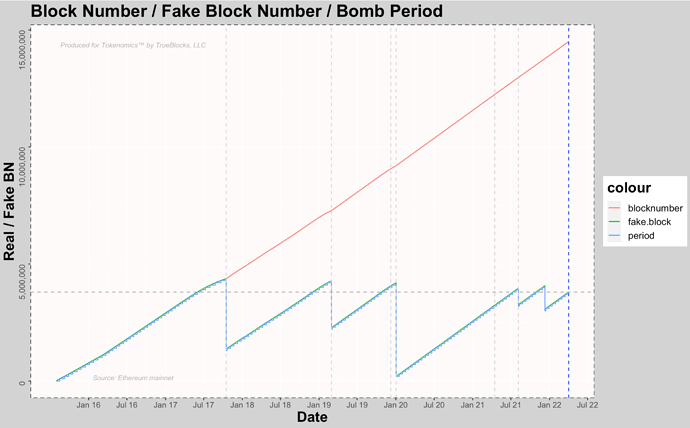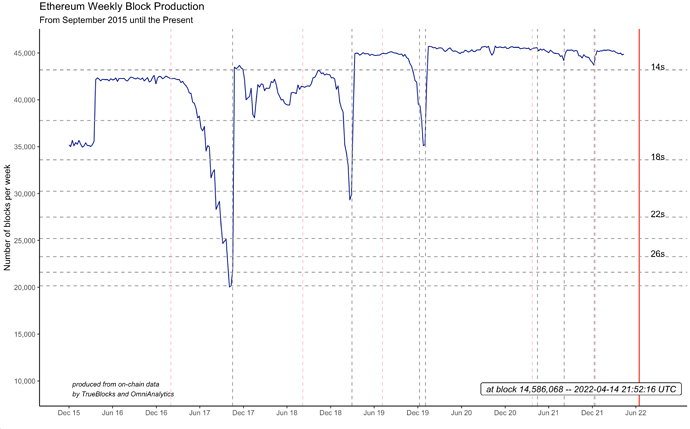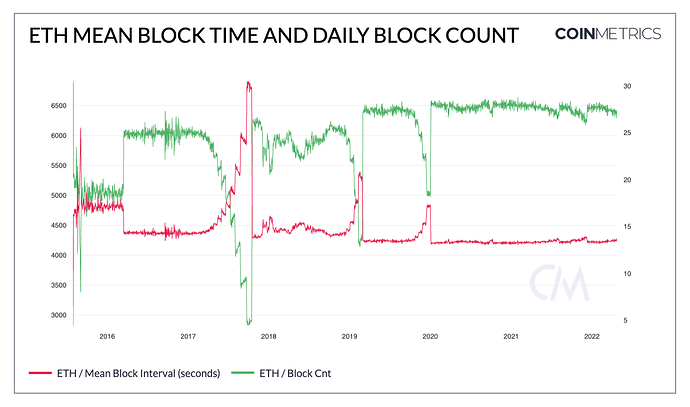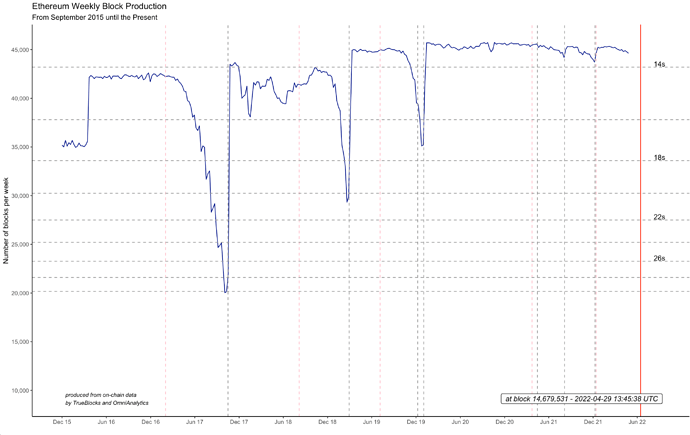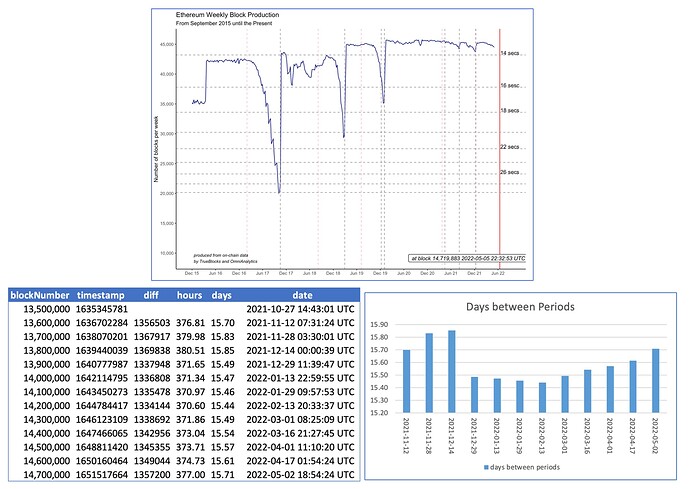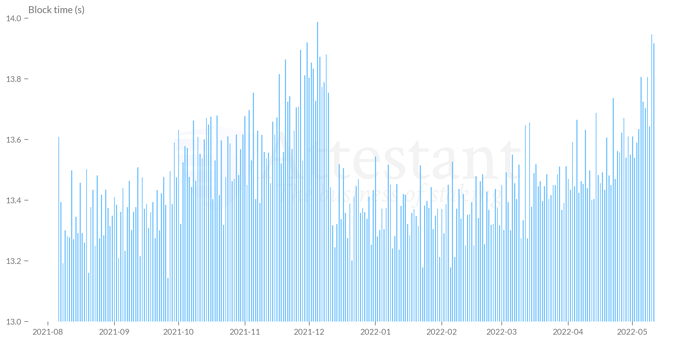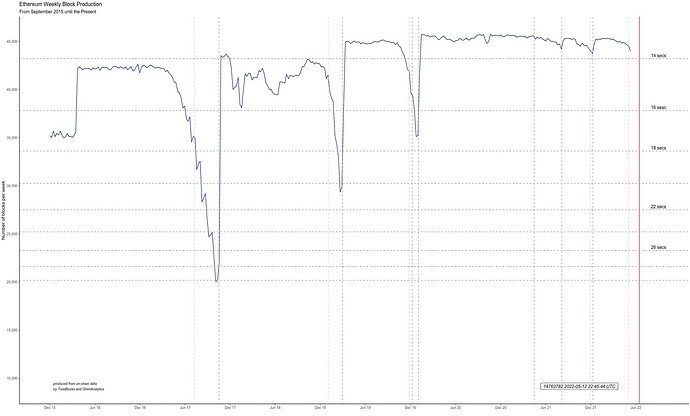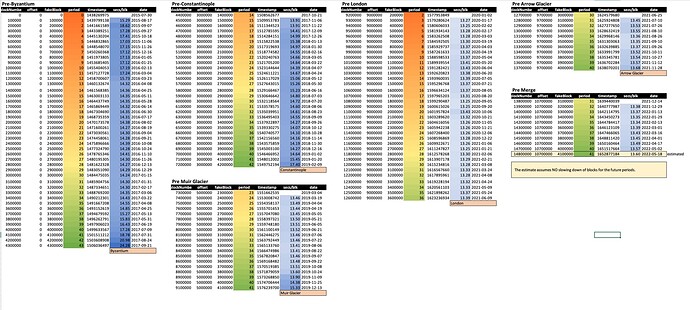At block 14,600,000, which happened this week, we entered into period 39, which based on previous bombs is when we usually start seeing a diminishment in block times. I’m not seeing that yet. This is not yet concerning, but is becoming “interesting.” (See below).
Here is an estimate, assuming no growth in block times, of when the next three doublings in difficulty will happen. (A doubling happens when the period changes – period = fakeBlockNum/100000 – fakeBlockNum = realBlockNum-10,700,000 – the additional difficulty at each block is 2^period).
blockNumber timestamp date name
14000000 1642114795 2022-01-13 22:59:55 UTC
14100000 1643450273 2022-01-29 09:57:53 UTC
14200000 1644784417 2022-02-13 20:33:37 UTC
14300000 1646123109 2022-03-01 08:25:09 UTC
14400000 1647466065 2022-03-16 21:27:45 UTC
14500000 1648811420 2022-04-01 11:10:20 UTC
14600000 1650160464 2022-04-17 01:54:24 UTC
14700000 1651492241 2022-05-02 11:50:41 UTC (est flat)
14800000 1652822241 2022-05-17 21:17:21 UTC (est flat)
14900000 1654152241 2022-06-02 06:44:01 UTC (est flat)
In this estimate, which extends to period 42 (the same period just prior to the Byzantium fork–see above charts), I add NO additional seconds to each block. This may seem conservative, but it tries to take into account the possibility that the much higher hash rate we’re seeing now (compared to the past) may be masking the increasing difficulty of each change of period (bomblet).
This next group of data is a slightly less conservative estimate showing a one-second slowing down of blocks with each doubling. If this happened, we may be at 16-second blocks by the end of June):
blockNumber timestamp date name
14000000 1642114795 2022-01-13 22:59:55 UTC
14100000 1643450273 2022-01-29 09:57:53 UTC
14200000 1644784417 2022-02-13 20:33:37 UTC
14300000 1646123109 2022-03-01 08:25:09 UTC
14400000 1647466065 2022-03-16 21:27:45 UTC
14500000 1648811420 2022-04-01 11:10:20 UTC
14600000 1650160464 2022-04-17 01:54:24 UTC
14700000 1651837086 2022-05-06 11:38:06 UTC (est onesec)
14800000 1653730218 2022-05-28 09:30:18 UTC (est onesec)
14900000 1655823350 2022-06-21 14:55:50 UTC (est onesec)
My growing concern is that due to a much higher hash rate, unlike previous bombs, this bomb’s effect may not appear at all until it appears massively. (In other words, this bomb may truly explode!)
The higher hash rate may be hiding the initial, smaller shocks to the system (the bomblets) which are being recovered from more quickly, so much so that they don’t reveal themselves in the weekly production. (I looked at a daily chart that also does not show much of a slow-down.)
The concern is that once the system loses its ability to recover from the shock of a doubling, it will lose that ability in a serious way.
I’ll keep watching it.
We should start seeing a recognizable diminishment in block times soon. If not, we’ll need to dig deeper.
